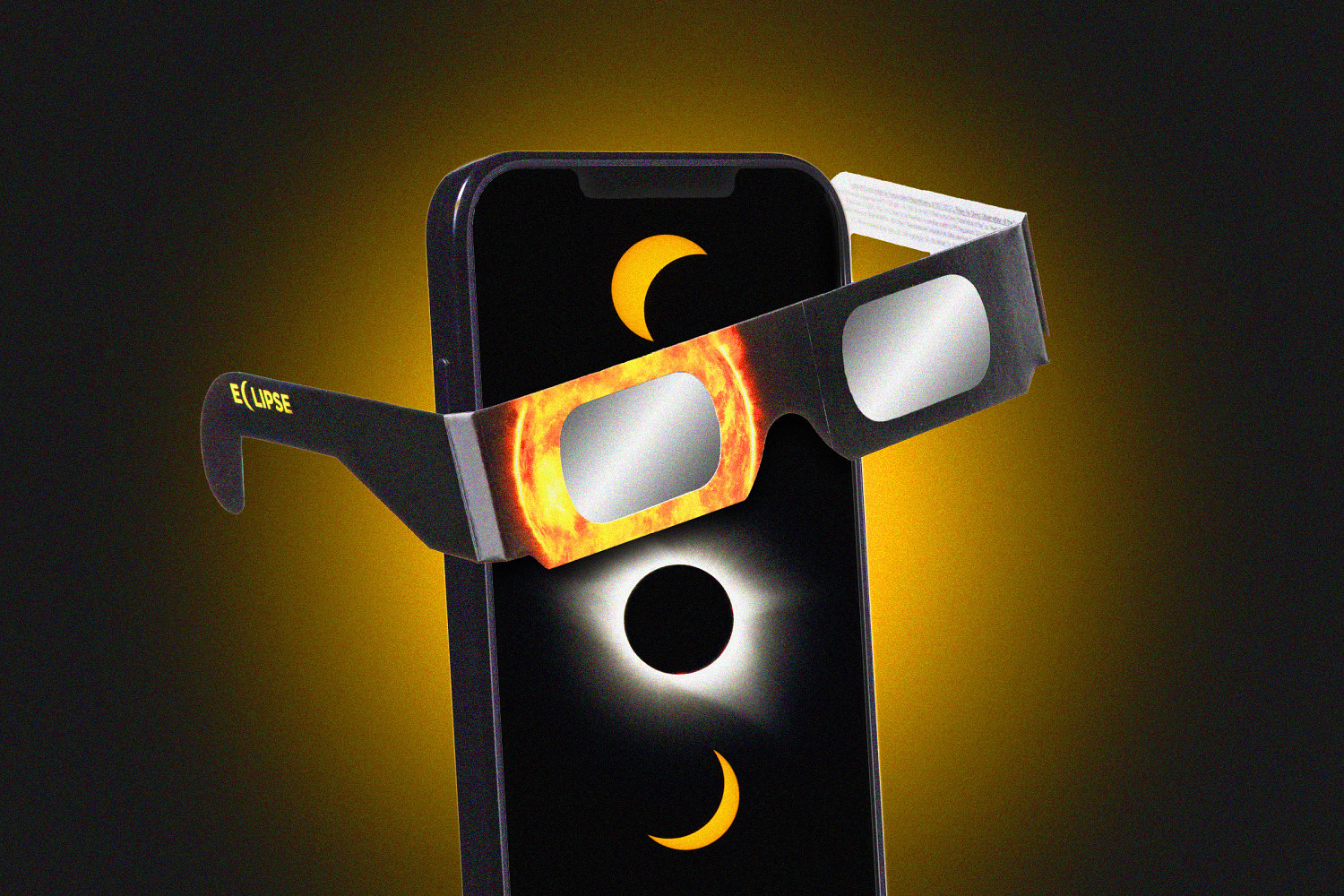[ad_1]

A total solar eclipse will cross North America Monday and eclipse mania has seized the U.S., with concerts, viewing parties and even a mass wedding planned along the path of totality to witness the once-in-a-generation celestial event.
If you’re planning to bear witness to the rare eclipse, you’re probably getting your phone cameras ready. But have you ever tried taking a picture of the sky and noticed it didn’t translate too well?
Here are some tips on how to best photograph Monday’s celestial event with your phone — no professional cameras required!
Try a sun filter or your eclipse glasses
A total solar eclipse is when the moon fully obscures the sun. More than a dozen states are within the path of totality, a track more than 100 miles wide that stretches from Texas to Maine. In that path, the moon will fully block the sun’s light and darkness will take hold for a few minutes in the middle of the afternoon.
Phone cameras aren’t always the best at capturing the sky. But just as your eyes need eclipse glasses to see Monday’s celestial event, your phone camera lens might too.
Try pressing your eclipse glasses close to your lens before totality, when the skies temporarily darken, to eliminate the light blooming. When totality happens, remove the filter or glasses — they’re no longer needed.
You can also purchase a sun filter for the phone’s lenses, which can help you capture a clearer shot.
Focus and exposure
To focus your phone’s camera on the eclipse, try using its focus lock feature. Tap your screen on where you’d like to focus, then hold until you see the yellow AE/AF LOCK alert. Your phone will now keep that area in focus.
Or adjust your exposure. On your focus area you’ll see a sun icon. Drag your finger up and down near the sun icon to increase or decrease exposure, either making your image brighter or darker. Bring your exposure down to capture the details of the eclipse. Bring your exposure up to capture totality, when it’s darkest.
Minimize movement
To minimize movement so you can get the clearest shot, use a tripod or your phone’s timer mode.
You can also use burst mode during totality to get as many photos as quickly as possible, so you can capture the special “diamond ring effect,” a sparkly glimmer seen as the moon makes its final move over the sun.
Don’t zoom in too much — this can decrease quality and cause pixelation!
But remember, this total eclipse is practically a once-in-a-lifetime experience, so don’t forget to document the moment beyond the sky. Take pictures of your surroundings, like people reacting to the eclipse, and crescent-shaped patterns of light through trees on the ground. These types of special moments will also capture the feeling and experience of an eclipse.
[ad_2]
Source link

